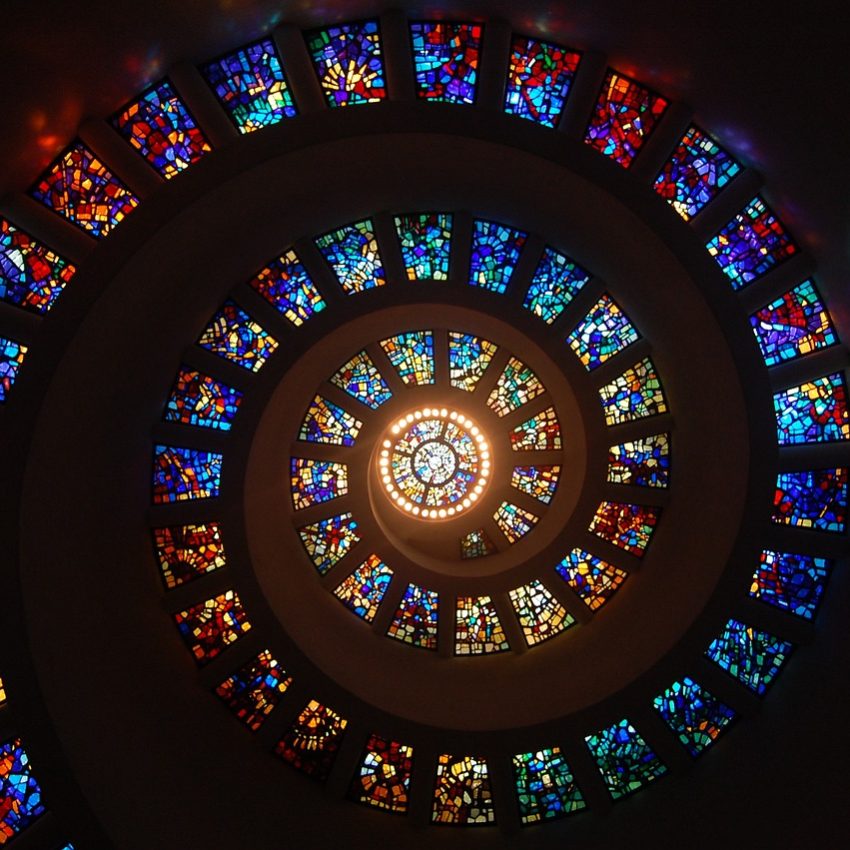Discover How Damien Hirst Became the King of Modern Art
Born 1965 in Bristol, England, Damien Hirst is undoubtedly one of the most controversial and influential figures in contemporary art.
Hirst emerged as a leading figure among the Young British Artists (YBAs) alongside Liam Gillick, Tracey Emin, and Sarah Lucas in the late 1980s and early 1990s. His innovative and often provocative works have left an indelible mark on the art world, challenging conventions and pushing boundaries.
Renowned for his provocative and thought-provoking creations, Hirst’s presence in the art world is not just significant; it’s revolutionary. From pickled sharks to dazzling diamond-encrusted skulls, each piece by this visionary artist serves as a mirror reflecting back society’s deepest fears, desires, and contradictions.
But who is Damien Hirst beyond the sensational headlines and staggering auction prices? Unraveling this enigmatic figure reveals not just an artist but a philosopher wielding paintbrushes and scalpel blades with equal finesse.
His works speak a language that transcends mere aesthetics, delving into realms where mortality meets materialism, where beauty dances with decay.
As we embark on this journey through the mesmerizing landscape of Hirst’s creations, prepare to be challenged, delighted, and perhaps even transformed by the sheer daring of his artistic vision.
Early Life & Career of Damien Hirst
Damien Hirst is a British artists who grew up in a working-class family where his artistic inclinations were nurtured from a young age. His early exposure to the vivid colors and forms of sea life during childhood visits to the seaside would later manifest profoundly in his iconic series of preserved animals and dissected creatures. While attending Goldsmiths College at the University of London in the late 1980s, Hirst joined a group known as the Young British Artists (YBAs), a cohort that challenged traditional art practices with their daring and often provocative creations. This period marked the beginning of Hirst’s meteoric rise to prominence within the contemporary art world.
During the 1990s, Damien Hirst’s career was closely linked with the collector Charles Saatchi, but increasing frictions came to a head in 2003, and the relationship ended. Saatchi’s support played a pivotal role in propelling Hirst to fame. However, tensions between the two reached a breaking point in 2003, leading to the dissolution of their relationship. This significant development marked a turning point in Hirst’s career, prompting him to explore new avenues and assert his independence within the art world.
The artists fascination with the complex relationships between art, science, and mortality is evident throughout his career. His exploration of life and death, often through the use of dead animals and medical paraphernalia, has sparked both admiration and controversy. Perhaps his most famous work, “The Physical Impossibility of Death in the Mind of Someone Living,” features a tiger shark suspended and preserved in formaldehyde, encapsulating the fragility and brutality of life. This piece solidified his reputation as a boundary-pushing artist unafraid to confront societal taboos head-on.
Featuring an actual shark suspended in formaldehyde within a glass tank, this artwork sparked intense debates about ethics, mortality, and human perception. The sheer audacity of placing death so prominently on display forced viewers to grapple with existential questions while simultaneously propelling Hirst into international acclaim. Through this controversial work, he established himself as an enfant terrible whose conceptual prowess matched his flair for spectacle, setting the stage for further artistic exploration that would captivate audiences worldwide.
Throughout his career, Hirst has been unafraid to confront taboo subjects and challenge traditional notions of beauty and morality. His “Medicine Cabinets” series, for example, presents a stark juxtaposition of clinical precision and human vulnerability, reflecting on the complexities of modern medicine and mortality.
The artist’s use of found materials, such as thousands of butterfly wings and human skulls, adds layers of meaning to his works, inviting viewers to contemplate the fragility and transience of life. His iconic “Spot Paintings,” characterized by their vibrant colors and meticulous arrangement of dots, explore the intersection of order and chaos, echoing themes of mortality and infinity.
Damien Hirst achieved a remarkable milestone in his career, breaking sale records, as well as hirst’s own record with £10.3 million, for The Golden Calf, an animal with 18-carat gold horns and hooves, preserved in formaldehyde. This significant achievement underscores Hirst’s immense influence and commercial success in the art world, solidifying his position as one of the most prominent artists of his generation.
In 2015, Damien Hirst fulfilled a longstanding ambition with the opening of the Newport Street Gallery in London, a testament to his commitment to sharing his art collection with the public. Currently lives and works in London and Gloucestershire, United Kingdom, Hirst’s artistic legacy extends globally, with his works held in prestigious collections such as the Tate Gallery in London, the Hirshhorn Museum and Sculpture Garden in Washington, D.C., and the Rubell Family Collection in Miami.
Artwork and Artistic Themes
British art
In the realm of Damien Hirst’s artistic repertoire, themes surrounding the intricate dance between life and death serve as poignant threads woven deftly through his iconic works. Through pieces like The Pharmacy series, Hirst delves into the juxtaposition of vitality and mortality, challenging viewers to confront the fragility of existence in a visually striking manner. Each meticulously preserved pharmaceutical installation not only beckons contemplation on our society’s obsession with health and preservation but also subtly hints at the inevitable decay that shadows all life forms. By presenting these contrasting elements in a clinical yet artistically infused setting, Hirst prompts us to question our own perceptions of permanence and impermanence.
Similarly, in For The Love Of God, Hirst casts an unflinching gaze upon one of humanity’s most profound fears—the concept of death itself. Through this masterful creation—a platinum cast of a human skull adorned with 8,601 diamonds—Hirst navigates the realms between artistry and mortality with startling clarity.
In the realm of Damien Hirst’s artistic repertoire, themes surrounding the intricate dance between life and death serve as poignant threads woven deftly through his iconic works. Through pieces like The Pharmacy series, Hirst delves into the juxtaposition of vitality and mortality, challenging viewers to confront the fragility of existence in a visually striking manner. Each meticulously preserved pharmaceutical installation not only beckons contemplation on our society’s obsession with health and preservation but also subtly hints at the inevitable decay that shadows all life forms. By presenting these contrasting elements in a clinical yet artistically infused setting, Hirst prompts us to question our own perceptions of permanence and impermanence.
Similarly, in For The Love Of God, Hirst casts an unflinching gaze upon one of humanity’s most profound fears—the concept of death itself. Through this masterful creation—a platinum cast of a human skull adorned with 8,601 diamonds—Hirst navigates the realms between artistry and mortality with startling clarity.
It is here where he encapsulates both allure and repulsion in a single symbolic entity: confronting us not just with opulence but with our intrinsic fear of finitude. In such pieces, Hirst transcends mere spectacle; he compels audiences to engage deeply with their own existential quandaries while showcasing beauty entwined intricately within morbid fascination.
In 2008, Hirst made headlines with his audacious auction at Sotheby’s, bypassing traditional galleries and selling his artworks directly to collectors. The auction, entitled “Beautiful Inside My Head Forever,” included a platinum cast of a human skull encrusted with over 8,000 diamonds, which sold for a staggering £50 million.
Awards & Exhibitions
In 1991, Charles Saatchi extended an offer to fund any artwork Damien Hirst desired to create. The culmination of this support was unveiled in 1992 at the inaugural Young British Artists exhibition held at the Saatchi Gallery in North London. Hirst’s creation, titled “The Physical Impossibility of Death in the Mind of Someone Living,” featured a shark suspended in formaldehyde within vitrines (clear display case).
Remarkably, this piece sold for £50,000, despite the fact that the shark itself had been sourced by a commissioned fisherman in Australia at a cost of £6,000. This groundbreaking work not only exemplified Hirst’s bold artistic vision but also underscored the burgeoning commercial success that would come to define his career.
In 1992, Damien Hirst was nominated for the Turner Prize for his work displayed at the Saatchi Gallery in North London, including “The Physical Impossibility of Death…”. The award went to Grenville Davey that year.
Away From The Flock
In 1994, Damien Hirst curated the exhibition “Some Went Mad, Some Ran Away” at the Serpentine Gallery in London, where he displayed his iconic work “Away from the Flock,” featuring a sheep suspended in a tank of formaldehyde. However, on May 9th of that year, the exhibition took an unexpected turn when Mark Bridger, a 35-year-old artist from Oxford, entered the gallery and poured black ink into the tank. Bridger then rechristened the work as “Black Sheep,” in a provocative act that challenged Hirst’s original conception and ignited discussions about the boundaries of art and intervention.
In September 2003, Damien Hirst held a groundbreaking exhibition titled “Romance in the Age of Uncertainty” at Jay Jopling’s esteemed White Cube gallery in London. This exhibition not only captivated audiences with its provocative themes and innovative artistic approach but also garnered substantial financial success for the artist, reportedly earning him a staggering £11 million. This achievement further solidified Hirst’s reputation as a leading figure in the contemporary art scene, showcasing his ability to both provoke thought and command significant commercial value.
Damien Hirst’s art has been prominently featured in a multitude of solo and group exhibitions, spanning prestigious venues across the globe. Notable among these exhibitions are major retrospectives held at the Museo Archeologico Nazionale in Naples in 2004 and the Tate Modern in London in 2012. These retrospectives provided comprehensive insights into Hirst’s artistic evolution and significance, solidifying his status as a leading figure in contemporary art.
In 2017, Damien Hirst organized a solo exhibition in collaboration with the Pinault Foundation in Venice, coinciding with the Biennale. The exhibition, titled “Treasures from the Wreck of the Unbelievable,” was showcased in two prestigious venues in the city: Palazzo Grassi and Punta della Dogana. This ambitious exhibition purported to present ancient treasures recovered from a sunken Greek ship, featuring a diverse array of artifacts ranging from Ancient Egyptian-like items to reproductions of Disney characters, all encrusted with shells and corals. This innovative project exemplifies Hirst’s penchant for blurring the lines between reality and fiction, challenging viewers to question the authenticity and value of the objects on display.
Influence & Legacy
Damien Hirst’s impact on contemporary art reverberates worldwide, with his audacious and provocative works challenging traditional artistic boundaries. His early ventures into the realm of conceptual art reshaped notions of what defines art itself, pushing viewers to question established norms. Through pieces like The Physical Impossibility of Death in the Mind of Someone Living, where a preserved shark looms suspended in formaldehyde, Hirst thrusts audiences into a dialogue on life, death, and human fragility.
Internationally recognized for his bold statements critiquing society’s obsession with wealth and mortality, Hirst continues to inspire generations of artists to push past comfort zones. The intricate interplay between life’s transience and materialism found in works like For the Love of God – a platinum cast skull adorned with diamonds – challenges viewers to confront their own values and perceptions. By blending shock value with profound reflection, Damien Hirst leaves an indelible mark on contemporary art movements as a trailblazer unafraid to disrupt conventions for lasting resonance.
Damien Hirst is undoubtedly one of the most controversial and influential figures in contemporary art. Born in 1965 in Bristol, England, Hirst emerged as a leading figure among the Young British Artists (YBAs) in the late 1980s and early 1990s. His innovative and often provocative works have left an indelible mark on the art world, challenging conventions and pushing boundaries.
Hirst’s fascination with the intersections between art, science, and mortality is evident throughout his career. His exploration of life and death, often through the use of dead animals and medical paraphernalia, has sparked both admiration and controversy. Perhaps his most famous work, “The Physical Impossibility of Death in the Mind of Someone Living,” features a tiger shark suspended in formaldehyde, encapsulating the fragility and brutality of life.
Throughout his career, Hirst has been unafraid to confront taboo subjects and challenge traditional notions of beauty and morality. His “Medicine Cabinets” series, for example, presents a stark juxtaposition of clinical precision and human vulnerability, reflecting on the complexities of modern medicine and mortality.
.
Hirst’s use of found materials, such as butterfly wings and human skulls, adds layers of meaning to his works, inviting viewers to contemplate the fragility and transience of life. His iconic “Spot Paintings,” characterized by their vibrant colors and meticulous arrangement of dots, explore the intersection of order and chaos, echoing themes of mortality and infinity.
In 2008, Hirst made headlines with his audacious auction at Sotheby’s, bypassing traditional galleries and selling his artworks directly to collectors. The auction, entitled “Beautiful Inside My Head Forever,” included a platinum cast of a human skull encrusted with over 8,000 diamonds, which sold for a staggering £50 million.
Despite his commercial success, Hirst’s work continues to divide critics and audiences alike. Some view his use of shock tactics and sensationalism as a cynical ploy for attention, while others see it as a fearless interrogation of the human condition.
In recent years, Hirst has expanded his artistic practice to embrace new technologies, including the creation of NFT (non-fungible tokens). These digital artworks, which exist solely in the digital realm, further blur the boundaries between art and commerce, challenging traditional notions of value and ownership.
Hirst’s influence extends far beyond the confines of the art world. His collaboration with the British art collector Charles Saatchi helped to catapult him to international fame, while his ambitious exhibitions at institutions such as the Tate Modern and the Venice Biennale have solidified his reputation as a visionary artist.
Legal Disputes
Since 1999, Damien Hirst’s artistic output has faced considerable scrutiny, with accusations of plagiarism arising on 16 occasions. One particularly notable instance involved his sculpture “Hymn,” which was discovered to bear a striking resemblance to a child’s toy. This revelation led to legal proceedings, ultimately culminating in an out-of-court settlement. Such controversies highlight the complex legal and ethical issues surrounding appropriation and originality in contemporary art, raising questions about artistic integrity and the boundaries of creative expression. Despite these challenges, Hirst’s impact on the art world remains undeniable, reflecting the enduring relevance of his work even in the face of criticism and controversy.
Despite increasing frictions and controversies surrounding his work, Damien Hirst remains a central figure in contemporary art, constantly pushing the boundaries of what is possible and challenging our preconceptions about the nature of art and existence itself. His long-term ambition to share his art collection with the public, exemplified by the opening of the Newport Street Gallery in London, underscores his commitment to democratizing access to art and engaging with audiences on a global scale.
CONCLUSION
Damien Hirst’s art transcends conventional boundaries, challenging viewers to confront their perceptions of mortality, consumer culture, and the very essence of existence itself. Through his provocative works like The Physical Impossibility of Death in the Mind of Someone Living – a shark suspended in formaldehyde – he invites audiences to question the fragility of life and humanity’s relationship with nature. By seamlessly intertwining themes of beauty and decay, creation and destruction, Hirst forces us to contemplate our own fleeting existence in this vast universe.
In delving into Damien Hirst’s artistic legacy, it becomes apparent that his influence extends far beyond traditional art forms. He has redefined modern art by provoking discussions on the intersection between commerce and creativity, pushing boundaries through controversial installations that challenge societal norms. As we reflect on Hirst’s body of work encompassing spot paintings, spin paintings, and intricate sculptures exploring themes such as vanity and excess, we find ourselves immersed in a world where aesthetics merge with profound philosophical inquiry. In embracing Damien Hirst’s creations, we are compelled not only to observe but to introspect upon the complex layers of meaning he presents – an invitation into a realm where art is not merely portrayed but experienced at its most visceral level.





